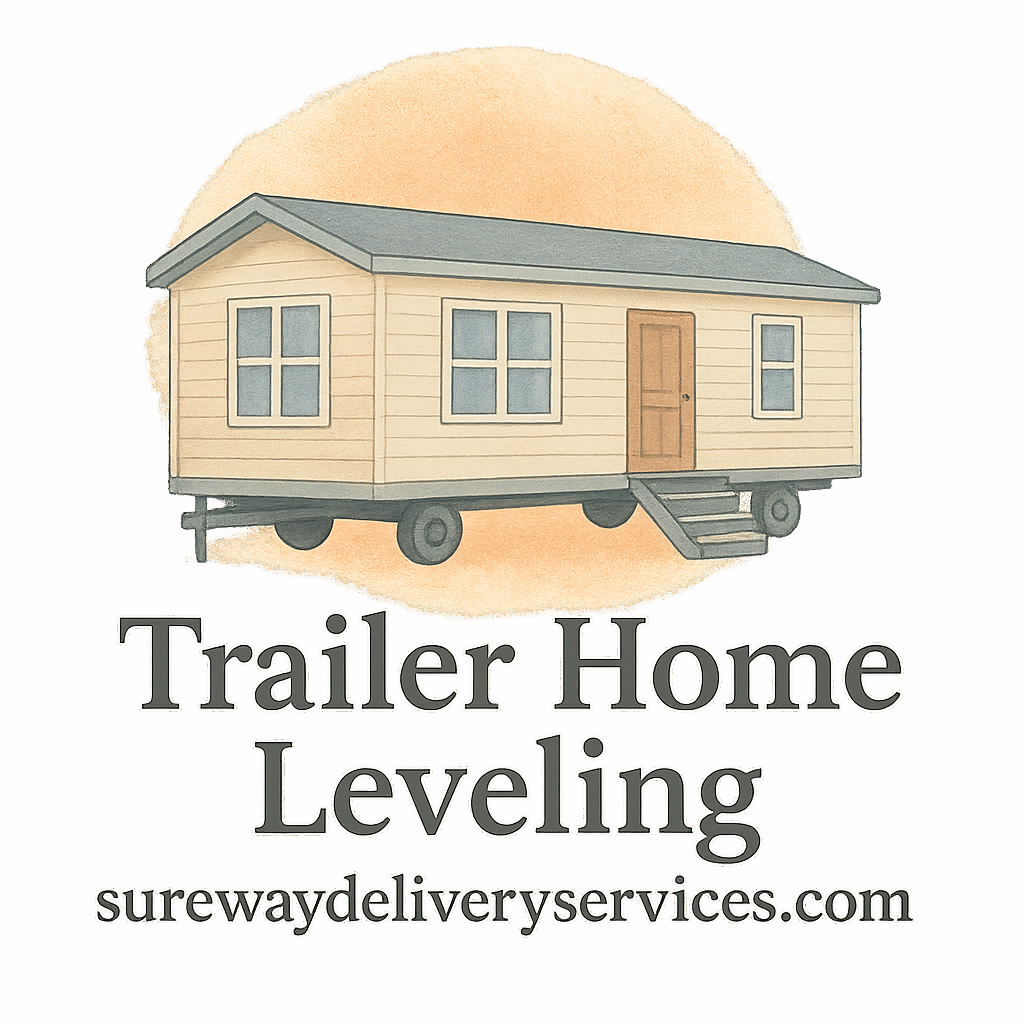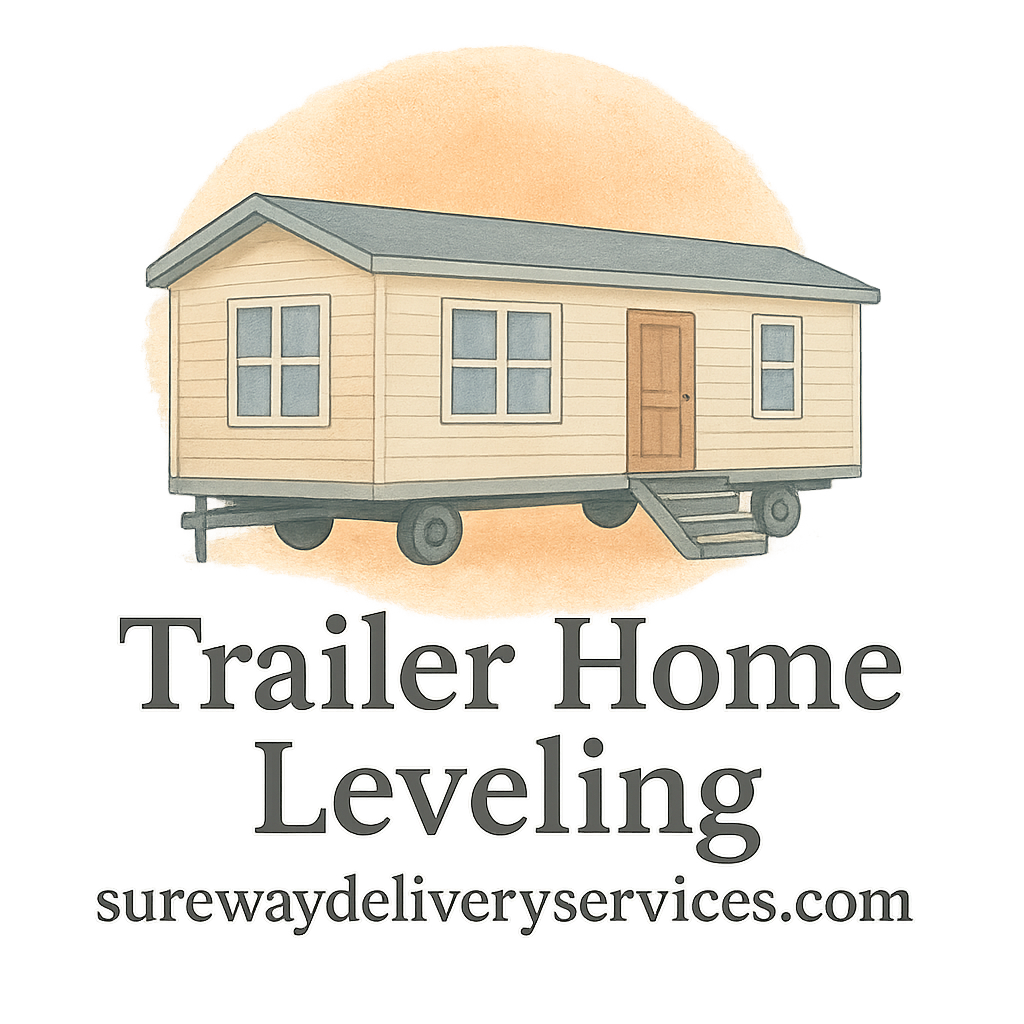Introduction
So, you’ve finally had your trailer home leveled—congratulations! That’s a huge step toward stability and comfort. But wait, you’re not quite done yet. Like any good investment, your home leveling project needs follow-up care to stay effective. Whether you’re a first-time homeowner or a seasoned mobile home dweller, knowing what comes next can save you a ton of headaches down the line.
In this guide, we’ll break down the five key follow-up services you should expect (and demand) after leveling your trailer home. Plus, we’ll link you to helpful internal resources on Trailer Home Leveling so you can dig even deeper.
Why Follow-Up Services Matter
The Risks of Skipping Follow-Ups
Imagine getting a haircut but never trimming the ends again. It won’t be long before things look… uneven. That’s pretty much what happens if you skip post-leveling services. Your home may look fine now, but small problems—like shifting soil or misaligned utilities—can turn into major (and expensive) repairs later.
For a complete overview of trailer leveling fundamentals, check out our Basics Introduction.
1. Post-Leveling Inspection and Adjustments
How Professional Inspections Work
After your home is leveled, a thorough post-leveling inspection should be conducted to ensure everything settled correctly. Think of it like a doctor’s follow-up after surgery—no skipped steps allowed.
Visit our Maintenance & Inspection page for more info on what to expect during checkups.
What Experts Look For After Leveling
- Shifting or sinking at pressure points
- Re-loosening of leveling jacks
- Minor cracks in siding or interior seams
Common Red Flags They Catch Early
- Doors and windows sticking again
- Floors beginning to slope
- Reappearing soft spots
Need a resource on common inspection signs? Start here:
👉 tag/inspection
2. Foundation Maintenance Plans
Preventing Future Issues
Your newly leveled home is like a freshly balanced scale—it needs regular care to stay that way. A foundation maintenance plan helps preserve your investment.
Explore Annual Maintenance best practices.
Seasonal and Annual Maintenance
- Spring: Check jacks for moisture damage
- Summer: Look for soil erosion near piers
- Fall: Prepare for freeze-thaw cycles
- Winter: Keep skirting sealed to prevent cold air gaps
Check out our Maintenance Tips for seasonal guides.
Key Maintenance Tools You’ll Need
- Digital level
- Skirting repair kits
- Soil moisture meter
- Jack stabilizers
Want to DIY it? Explore our curated Checklist before you start.
3. Plumbing and Utility Realignment
The Hidden Shift: What Happens Beneath the Surface
Leveling can nudge your plumbing and utility lines out of alignment. Pipes and wires aren’t as flexible as we’d like them to be. That’s where a plumbing and utility check-up comes in.
Realigning Pipes After Leveling
Your plumber will likely:
- Check for new leaks
- Inspect vent pipes
- Confirm toilet seals are tight
- Evaluate under-trailer plumbing lines
This is especially vital if your trailer experienced major tilting before leveling. Learn more about structural recovery on our Techniques & Methods page.
Avoiding Utility Damage
Electricity and gas lines can also shift. Make sure professionals test these systems for pressure integrity and functionality. No sparks, no gas odors—just peace of mind.

4. Structural Support Reassessment
Reinforcing Jacks and Beams
After leveling, your jack system and beams might need upgrades. Some homes require heavier-duty jacks, especially if yours was poorly supported before.
See our section on tag/jacks for in-depth support options.
When to Upgrade or Replace Supports
- Rusted jack bases
- Corroded I-beams
- Loose footings
- Soft soil under supports
Recommended Service Packages for Reinforcement
Some companies bundle these into a Service Package that includes jack replacement, soil pad installation, and beam inspection. Choose wisely to avoid short-term fixes.
5. Customer Support and Follow-Up Communication
What Ongoing Communication Should Look Like
A reliable contractor will check in within 30-90 days post-leveling to schedule inspections and see how your trailer is holding up. If they vanish after the invoice, that’s a red flag.
Explore real Customer Reviews to find providers who follow through.
Reading Customer Reviews for Service Insight
Customers will often share if:
- Follow-ups were delayed
- Prices were inflated
- Communication broke down
Asking the Right Questions
Before you hire, ask:
- “What does your follow-up schedule include?”
- “Will I get a copy of the leveling report?”
- “What happens if something shifts in the next 6 months?”
How to Choose a Home Leveling Company That Offers These Follow-Ups
Spotting Red Flags (Like Overcharging)
Not all leveling jobs are equal. Some shady companies do the bare minimum and charge premium rates. Watch out for “too good to be true” pricing.
Review common pricing pitfalls in our Cost & Budgeting guide and browse our tag/overcharge resource.
Look for Complete Service Packages
A top-tier company will offer:
- Leveling + inspection
- Post-leveling utility testing
- Long-term maintenance plans
Don’t settle for a jack adjustment when you can have full peace of mind.
How Much Should You Budget for Follow-Up Services?
Cost Tips and Budget Hacks
Expect to spend $300–$800 for complete post-leveling services over the first year. It’s worth it to protect your initial investment of $1,000–$4,000.
Need more help with budgeting? Here’s your guide:
👉 tag/cost-tips
Avoiding Surprise Charges
Get everything in writing. Ask for a detailed scope of follow-ups before work begins. If the company can’t provide it, walk away.
Also check the tag/price archive to compare regional averages.
Signs Your Trailer Home Might Need Additional Attention
Checklist of Post-Leveling Warning Signs
Use this list to stay ahead of problems:
- Windows sticking again
- Uneven flooring returns
- Cracks forming in walls
- Plumbing leaks appear
- Squeaky doors and frames
Explore our tag/signs database for more.
When to Call for a Re-Inspection
If even one of the above signs shows up within 3–6 months of leveling, call your provider ASAP. Don’t wait until it becomes a costly repair.
Explore stories from others who caught issues early in our Success Stories.
Conclusion
Leveling your trailer home isn’t a one-and-done deal. To truly protect your home and your wallet, you need a strategy for what happens after the job is done. These five follow-up services—inspection, maintenance, utility checks, structural reassessments, and consistent support—are essential. Ignore them, and you risk losing all the hard-earned balance you just gained.
Make sure you work with reputable pros, set a maintenance budget, and stay informed using trusted sources like Trailer Home Leveling.
FAQs
1. How soon after leveling should I schedule a follow-up inspection?
Within 30 to 60 days is ideal. It allows the home to settle and gives you time to notice issues.
2. Is plumbing always affected by leveling?
Not always, but if your home had a noticeable tilt, plumbing shifts are common. An inspection is a good safety check.
3. Can I do follow-up maintenance myself?
Yes! With the right tools, some tasks like checking skirting or using a leveler can be DIY-friendly.
4. Are follow-up services included in most leveling quotes?
Not always. Always ask if follow-up visits are part of the service package.
5. What’s the most commonly overlooked follow-up task?
Many people forget to inspect utilities. Don’t assume all wires and pipes stayed put.
6. How do I avoid being overcharged for follow-ups?
Read the overcharge tips section and always compare 2–3 quotes.
7. How often should I inspect my home after leveling?
At least once per season. Refer to our tag/annual and tag/trailer-maintenance sections for regular checkup schedules.


